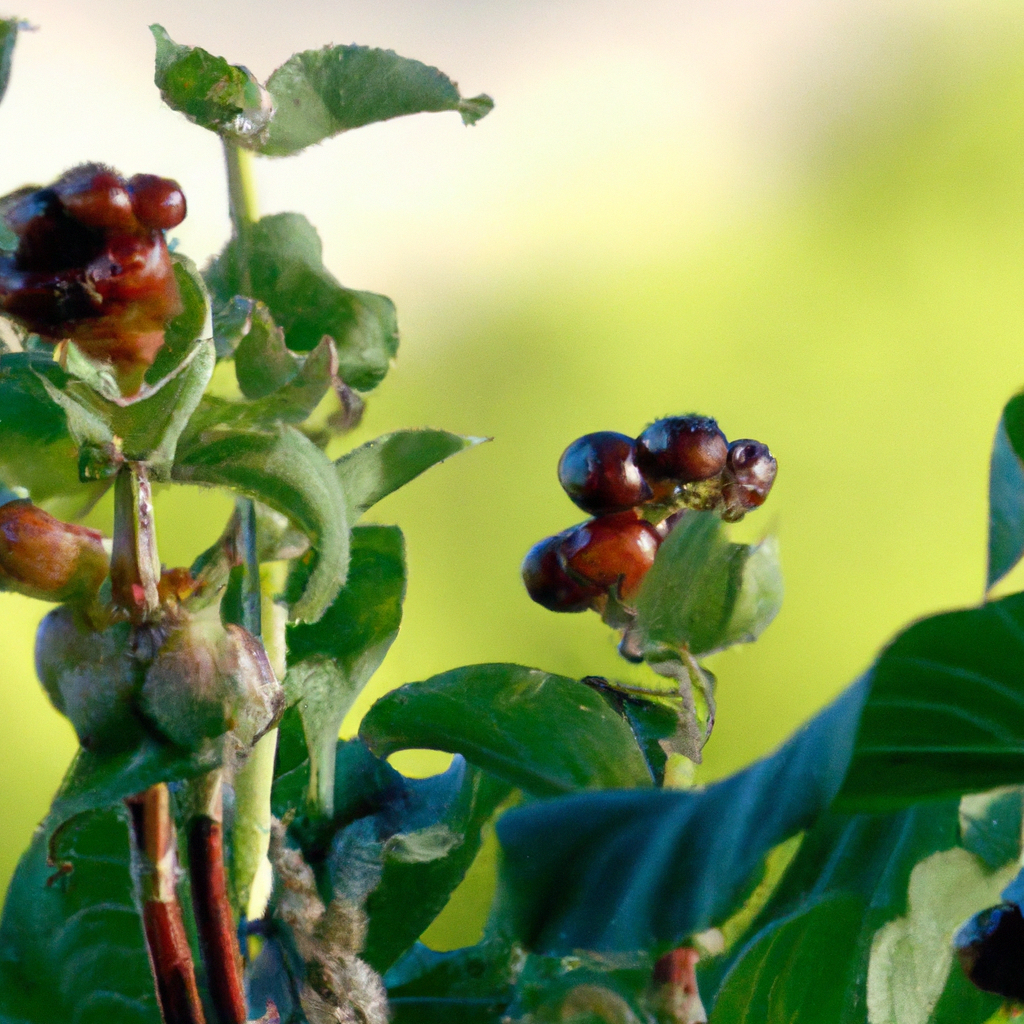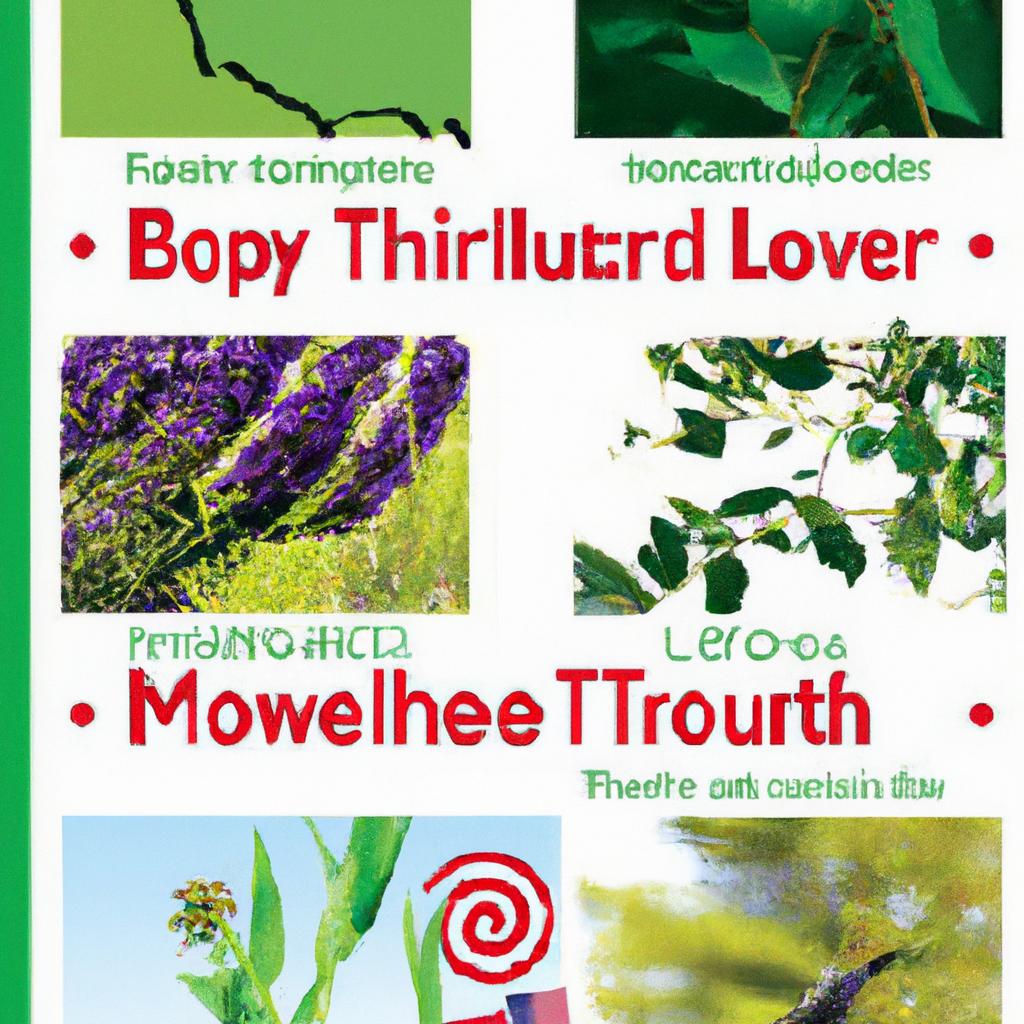Hi there! If you’ve ever wondered about the diverse natural beauty Maryland has to offer, then you’re in for a treat. In this article, we’ll take a closer look at the incredible native plants that call this state home. From the delicate perennials that dot the landscape to the majestic trees that tower over forests, each plant has its unique story to tell. So, let’s embark on a journey to explore the captivating world of Maryland’s native flora together!

Forest Ecosystem
Maryland is home to a diverse range of forest ecosystems, each with its own unique characteristics and plant species. One of the most prominent types of trees in Maryland’s forests is the deciduous tree. These trees shed their leaves in the fall and enter a dormant phase during the winter months. Common deciduous trees found in Maryland include the red maple, oak, hickory, and tulip poplar. These trees provide shade, food, and habitat for a variety of wildlife.
In addition to deciduous trees, Maryland’s forests are also home to coniferous trees. These evergreen trees retain their leaves year-round, providing important cover and food sources for animals during the colder months. The state tree of Maryland, the white oak, is a type of coniferous tree. Other examples of coniferous trees found in Maryland include pine, spruce, and cedar. These trees play a crucial role in maintaining the health and biodiversity of Maryland’s forests.
Beneath the canopy of the larger trees in Maryland’s forests, you will find a variety of understory trees and shrubs. These smaller plants are adapted to thrive in the shade and limited light of the forest floor. Examples of understory trees and shrubs include dogwood, redbud, holly, and witch-hazel. These plants add depth and diversity to the forest ecosystem, providing food and shelter for a wide range of animals.
Another important component of Maryland’s forest ecosystem is the presence of wildflowers. These colorful plants not only add beauty to the landscape but also serve as important food sources for pollinators such as bees and butterflies. Some native wildflowers found in Maryland include trillium, bloodroot, black-eyed Susan, and Virginia bluebells. The delicate beauty of these flowers adds a touch of vibrancy to the forest floor, creating a captivating sight for visitors to enjoy.
Wetland Ecosystem
Maryland is home to a significant number of wetland ecosystems, including marshes, swamps, and bogs. These unique habitats are characterized by their high water content and specialized plant communities. Marsh and swamp plants are well-adapted to grow in wet, marshy areas. Examples of marsh and swamp plants found in Maryland include cattails, bulrushes, sedges, and water lilies. These plants provide important habitat for waterfowl, amphibians, and other aquatic organisms.
Aquatic plants are another key component of Maryland’s wetland ecosystems. These plants can grow fully submerged in water, with their leaves and stems adapted to function underwater. Examples of aquatic plants in Maryland include pondweed, water milfoil, and waterweed. These plants serve both as a food source and provide oxygen to the underwater habitats they inhabit.
Bogs are unique wetland habitats characterized by acidic, nutrient-poor soils. In Maryland, bog plants are adapted to survive in these harsh conditions. Examples of bog plants found in Maryland include sphagnum moss, carnivorous pitcher plants, bog cotton, and cranberries. These plants play a crucial role in maintaining the delicate balance of the bog ecosystem, providing shelter and food for a variety of organisms.
Grassland Ecosystem
While Maryland is predominantly known for its forested areas, the state also boasts grassland ecosystems, albeit on a smaller scale. Grasslands are home to a variety of plant species that are adapted to thrive in open areas with abundant sunlight. Some common examples of grasses found in Maryland’s grassland ecosystems include switchgrass, little bluestem, and big bluestem. These grasses provide important habitat and food sources for animals such as deer, rabbits, and ground-nesting birds.
Forbs are another type of plant found in Maryland’s grassland ecosystems. Forbs are non-grass herbaceous plants that add diversity and color to grasslands. Examples of forbs found in Maryland include goldenrod, milkweed, coneflowers, and asters. These plants attract pollinators and provide important nectar sources for bees, butterflies, and other insects.
Sedges are a group of grass-like plants that thrive in wetter grassland areas, such as along streams and in low-lying areas. Maryland’s grassland ecosystems provide habitat for several species of sedges, including tussock sedge, Pennsylvania sedge, and slender sedge. These plants play a crucial role in stabilizing the soil and preventing erosion in these wetland grassland areas.
Coastal Ecosystem
Maryland’s coastline offers a unique coastal ecosystem that is home to a variety of specialized plant species. Beach and dune plants are adapted to survive in harsh, sandy conditions with strong wind exposure. Examples of beach and dune plants found in Maryland include beachgrass, dune sunflowers, sea oats, and beach plum. These plants help to stabilize the sand dunes and provide important habitat for coastal wildlife.
Salt marsh plants are another important component of Maryland’s coastal ecosystem. These plants are adapted to thrive in brackish water, where freshwater and saltwater mix. Examples of salt marsh plants found in Maryland include cordgrass, saltmarsh hay, marsh mallow, and sea lavender. These plants provide critical habitat for various migratory birds, crabs, and other tidal-dependent species.
Tidal bays in Maryland are areas where freshwater from rivers mixes with tidal waters from the ocean. These unique ecosystems are home to a variety of plant species that can tolerate both fresh and saltwater conditions. Examples of plants found in Maryland’s tidal bays include arrow arum, marsh marigold, pickerelweed, and water smartweed. These plants serve as food sources and habitat for a variety of fish, birds, and other aquatic organisms.

Pond and Lake Ecosystem
Maryland is blessed with numerous ponds and lakes, each with its own distinct ecosystem. Emergent plants are a common sight in these aquatic habitats, with their roots submerged in water while the leaves and stems project above the surface. Examples of emergent plants found in Maryland’s ponds and lakes include cattails, arrowheads, water lilies, and pickerelweed. These plants provide important habitat for fish, birds, and insects, while also serving to filter and improve water quality.
Submerged plants are another vital component of Maryland’s pond and lake ecosystems. These plants grow entirely underwater, their leaves and stems adapted for life below the surface. Examples of submerged plants found in Maryland include pondweeds, water milfoils, and waterweeds. These plants provide oxygen, food, and shelter for fish, aquatic invertebrates, and other underwater organisms.
Floating plants are a unique type of plant found in Maryland’s pond and lake ecosystems. These plants are not rooted in the sediment but instead float on the surface of the water. Examples of floating plants in Maryland include water ferns, duckweeds, and water hyacinths. These plants play a crucial role in providing shade, reducing evaporation, and providing habitat for various aquatic species.
Mountain Ecosystem
Maryland’s mountainous regions offer a different set of environmental conditions, resulting in unique plant communities and ecosystems. Alpine plants are found in higher elevations, where the climate is colder and more challenging. Examples of alpine plants found in Maryland’s mountains include mountain laurel, dwarf crested iris, bearberry, and mountain avens. These hardy plants are adapted to withstand harsh winds, extreme temperatures, and nutrient-poor soils.
Rock outcrop plants are specialized plants that are adapted to grow in rocky environments, such as cliffs and rocky slopes. Examples of rock outcrop plants found in Maryland include gray’s lily, green and gold, rock polypody fern, and Appalachian blunt-lobed woodsia. These resilient plants have adapted to survive in challenging conditions, clinging to the rocky surfaces and providing important habitat for insects and other small animals.
Meadow plants are found in the open grassy areas of Maryland’s mountainous regions. These plants thrive in areas with abundant sunlight and well-drained soils. Examples of meadow plants found in Maryland’s mountains include Indian paintbrush, butterfly weed, little bluestem grass, and wild bergamot. These plants provide important habitat and food sources for a variety of insects, birds, and larger mammals.

Urban and Suburban Ecosystem
Maryland’s urban and suburban areas offer a different type of ecosystem, characterized by human development and a mix of native and cultivated plant species. Street trees are an important component of Maryland’s urban and suburban ecosystems, providing shade, reducing heat, and improving air quality. Examples of street trees in Maryland include oak, maple, cherry, and dogwood. These trees not only enhance the aesthetic appeal of urban areas but also provide important habitat for birds and other wildlife.
Garden plants are commonly found in residential gardens and contribute to the overall diversity of Maryland’s urban and suburban ecosystems. Examples of garden plants in Maryland include roses, daffodils, tulips, and hydrangeas. These plants add color and beauty to the landscape, attracting butterflies and other pollinators.
Park and landscape plants are carefully selected and cultivated to create scenic public spaces in Maryland’s urban and suburban areas. Examples of park and landscape plants found in Maryland include azaleas, hostas, daylilies, and ornamental grasses. These plants provide important habitat and food sources for birds, butterflies, and other urban wildlife.
Pollinator Plants
Pollinator plants play a crucial role in supporting the health and diversity of ecosystems by attracting and providing food for pollinators such as bees, butterflies, and native bees. Butterfly host plants are specific plants that serve as food sources for caterpillars, the larval stage of butterflies. Examples of butterfly host plants found in Maryland include milkweed, violets, spicebush, and dill. By planting these host plants, you can help support butterfly populations and contribute to the overall biodiversity of Maryland’s landscapes.
Pollinator-friendly flowers are plants that provide nectar and pollen for a variety of pollinators. Examples of pollinator-friendly flowers found in Maryland include coneflowers, bee balm, black-eyed Susans, and lavender. By including these flowers in your garden or landscape, you can create a haven for bees, butterflies, and other pollinators, contributing to their conservation and wellbeing.
Native bees are important pollinators in Maryland, and providing attractants can help support their populations. Examples of native bee attractants found in Maryland include goldenrods, asters, sunflowers, and blueberries. By planting these attractants, you can create a habitat that supports native bees, ensuring the pollination of native plant species and the overall health of Maryland’s ecosystems.

Edible Plants
Maryland is home to a variety of edible plants, both cultivated and wild. Native fruits are an important part of Maryland’s edible plant offerings. Examples of native fruits found in Maryland include blackberries, raspberries, strawberries, and pawpaws. These fruits provide not only a delicious food source for humans but also serve as an important food source for wildlife.
Wild edible greens are another category of edible plants found in Maryland. These greens include various types of edible leaves, such as dandelion greens, lamb’s quarters, chickweed, and purslane. These plants can be foraged in the wild or grown in home gardens, providing a nutritious addition to salads and other dishes.
Medicinal herbs are another category of edible plants found in Maryland. These plants have traditionally been used for their healing properties and are still used in herbal medicine today. Examples of medicinal herbs found in Maryland include echinacea, goldenrod, yarrow, and ginseng. These plants can be cultivated or foraged and can be used to make teas, tinctures, and other herbal remedies.
Endangered and Rare Plants
Sadly, Maryland is home to several endangered and rare plant species that are at risk of extinction. Rare plants are those that are uncommon or have a limited geographic range within the state. Examples of rare plants found in Maryland include Virginia sneezeweed, Maryland meadowbeauty, Appalachian sandwort, and Maryland golden aster. These plants require special conservation efforts to protect and preserve their populations.
Threatened plants are those that are at risk of becoming endangered if action is not taken to protect their habitats and populations. Examples of threatened plants found in Maryland include the eastern bristle fern, showy lady’s slipper, and Harper’s oak. These plants are vulnerable to habitat loss, development, and other threats and require conservation efforts to ensure their survival.
Endangered plants are those that are at extreme risk of extinction and are in need of urgent conservation measures. Examples of endangered plants found in Maryland include the small whorled pogonia, American chaffseed, and Virginia spiraea. These plants are highly protected by state and federal laws and require significant conservation efforts to prevent their extinction.
In conclusion, Maryland is blessed with a wide variety of native plant species that inhabit its diverse ecosystems. From the enchanting forests to the vibrant wetlands, from the coastal habitats to the mountainous regions, from urban parks to pollinator gardens, and from edible plants to endangered species, the native plants of Maryland offer both beauty and ecological value. By understanding and appreciating these plants, we can better protect and conserve the unique biodiversity of Maryland’s natural landscapes for future generations to enjoy.


